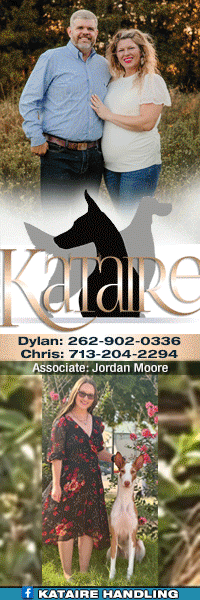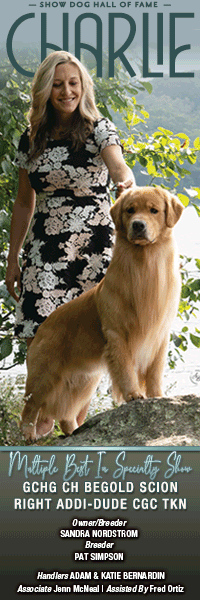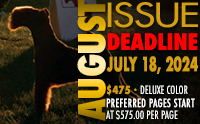Haymarket Faultless – The History-Making Bull Terrier

By Amy Fernandez
Feb 23, 1918 easily ranks among the top ten high octane moments in Westminster history. That night, an impenetrable crowd surrounded the BIS ring to witness a showdown featuring two dogs and two judges. Obviously, this predated AKC procedures of today. Two of America’s most highly respected all-rounders, Charles Hopton and Vinton Breese painstakingly eliminated top contenders, including the popular favorite. The 1917 BIS winner Ch. Conejo Wycollar Boy. The Wire never reached the final round. Calling the crowd’s reaction disappointment is an understatement.
After three days of shocks and upsets, spectator mood was comparable to a Manchester United football crowd. This fateful BIS decision came down to the Peke, Phantom of Ashcroft, imported for a record-breaking $7000. He faced off against another foreigner. But this crowd of diehard terrier fans unhesitatingly threw their support to the Canadian-bred Bull Terrier Ch. Haymarket Faultless.
As Hopton and Breese repeatedly put them through their paces, cheering morphed into roaring, banging chants that literally shook the building. Plainly, Breese and Hopton disagreed, and the crowd’s rising belligerence matched their increasingly confrontational debate. Every detail was chronicled by flocks of reporters documenting this bizarre showdown.

Westminster had introduced many changes that year to streamline show procedures, but no one anticipated a smackdown between the BIS judges. Hopton liked the Peke. Breese insisted on Faultless and neither one was willing to compromise. Finally the judging referee, Terrier authority George Steadman Thomas was called to break the deadlock. Haymarket Faultless made history as the first Bull Terrier and the first Canadian-bred Westminster winner. But that only partly explained the delirious crowd reaction.
This not only signaled a triumph for one of America’s most popular breeds, it was an unprecedented victory for the breed’s old guard. Reporting on this historic win, a teenage Bill Kendrick provided a detailed picture of Faultless, emphasizing his great strength of rib, beautiful sloping shoulders, nice reachy neck, dead true front, and muscular rear quarters, adding “his great forte was a matchless combination of type and balance.” Nor did he conceal his admiration for the dog’s “pure white coat and pure breeding.”
Looking at him today, Faultless appears conspicuously high-stationed and refined. His cropped ears and straight muzzle look even stranger. But a second generation old school Bull Terrier fancier like Kendrick considered ideal with “priceless little three cornered eyes and great sweep of powerful, punishing underjaw… noting that Faultless, “was not possessed of the now fashionable angulated foreface.” After England’s cropping ban, an unprecedented number of Bull Terriers arrived in America. Many of these imports were broad, compact, lower on leg, with shorter necks and heads politely described as “well-filled”. American fanciers not only cropped them, they began showing them.
Incendiary debates about Bull Terrier ear cropping eventually led AKC to expel the BTCA as a member club. The anti-cropping faction soon had company from equally incensed purists lamenting the rising popularity of this extreme, cobby type. Both issues were red hot in 1918, when UK breeders began shipping over color-bred whites, and then actual colored Bull Terriers.
To Kendrick and legions of other traditionalists, Faultless personified the White Cavalier at a time when the battle lines were drawn. Born in 1916, he was bred by Humphrey Elliott. His Haymarket kennel in Ottawa was internationally regarded and the breeding behind Faultless was considered impeccable. He was sired by Ch. Noross Patrican, litter brother to Ch. Noross Prospect, the era’s most influential studs. His dam, Ch. Glenmore Channel Queen, described as a doggy bitch, was originally imported by New York real estate mogul Robert Golet. He dabbled in many breeds but only bought the best.
Faultless later won the BTCA 1919 national specialty and returned to defend his Westminster title. He defeated 167 Bull Terriers and reached the final round for another showdown with his glamorous Peke rival. Like last time, Faultless had the crowd. To their dismay, Westminster’s three judge panel placed him reserve to the Airedale bitch, Ch. Briergate Bright Beauty, handled by Alf Delmont.

But he returned in 1920 for what seemed an easy victory under a prominent Bull Terrier breeder/judge. On Feb. 13, 1920 the Times reported, “One of the most significant decisions of the day came in the morning when T.S. Bellin, judging bull terriers, placed Ch. Allfire Supreme ahead of Canadian thoroughbred Haymarket Faultless. There was a decided difference of opinion among spectators as to respective merits of the two.”
This was far more than another Westminster upset. It signaled the breed’s changing direction. Although an uncropped Bull Terrier didn’t earn an AKC title until 1929, this issue lost steam as erect ears became a stabilized trait. In 1936, AKC overruled BTCA and recognized the colored variety. It was almost a century before another Bull Terrier took Westminster. And the 2006 winner, Ch. Rockytops Sundance Kid, was uncropped, colored and definitely cobby.
Short URL: http://caninechronicle.com/?p=28099
Comments are closed











